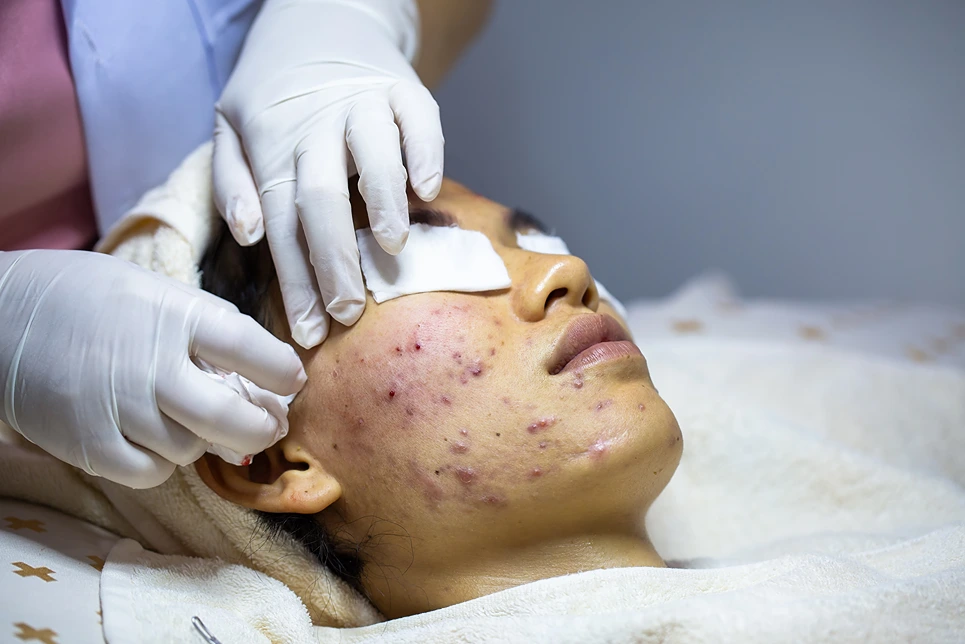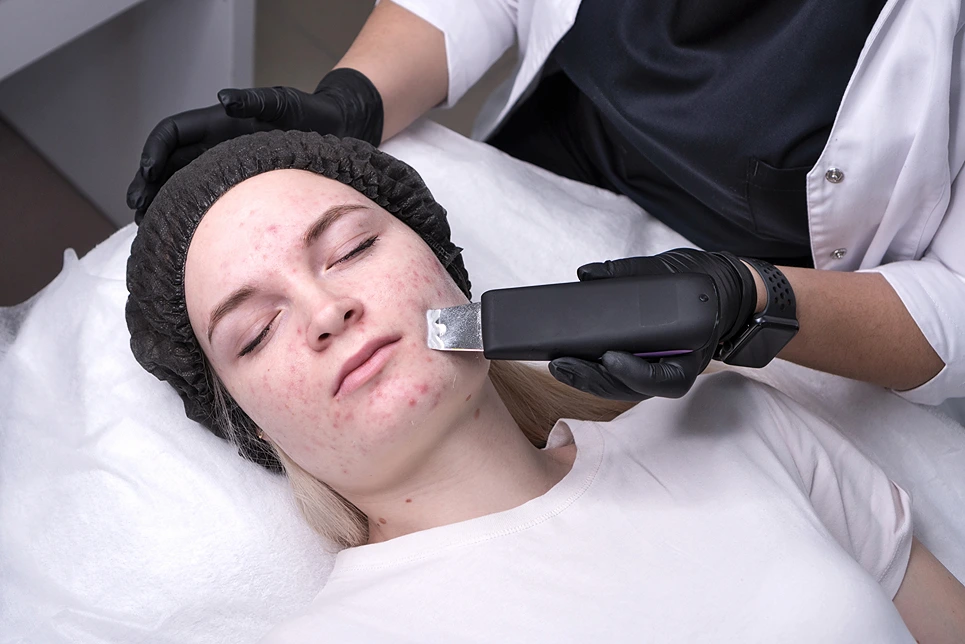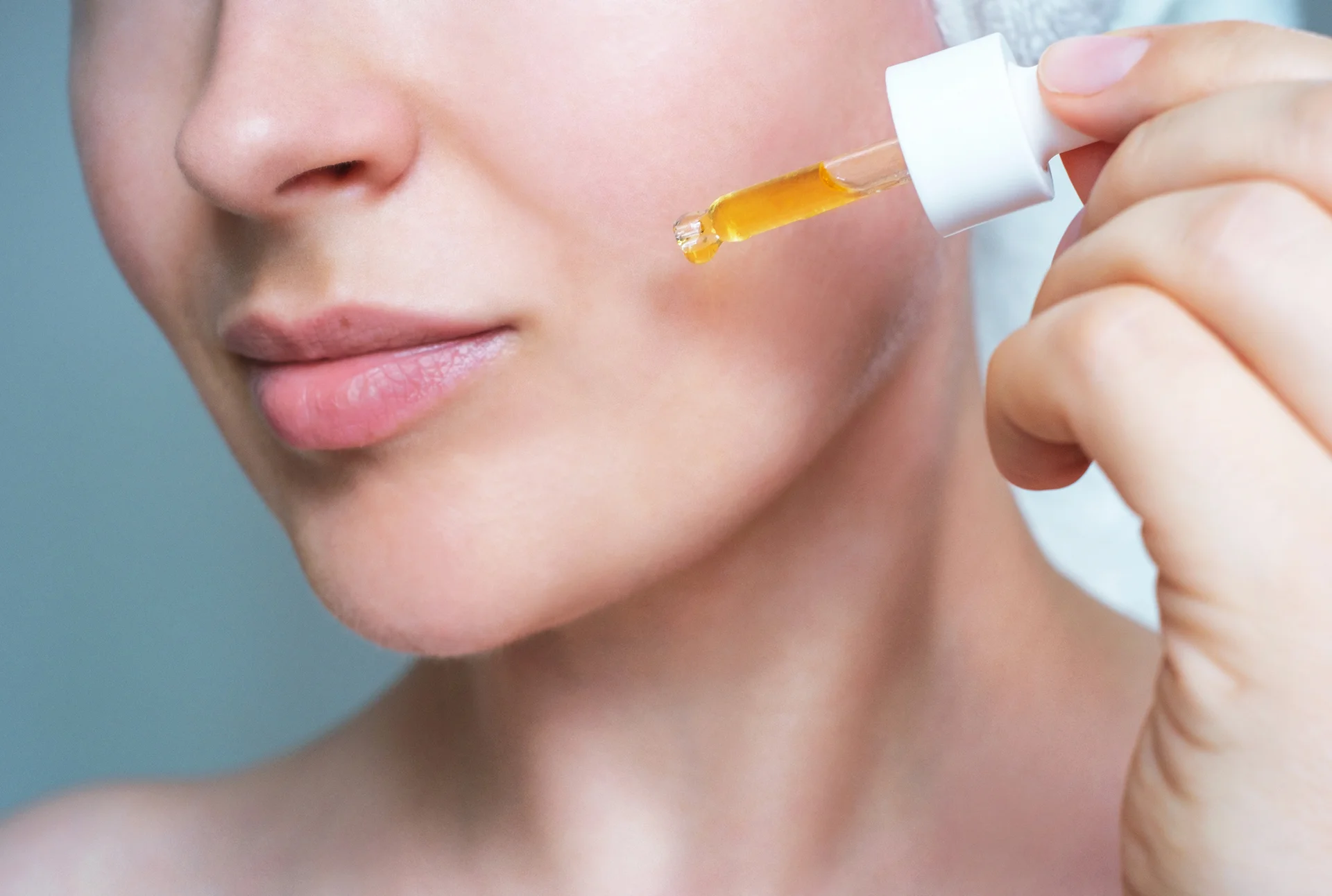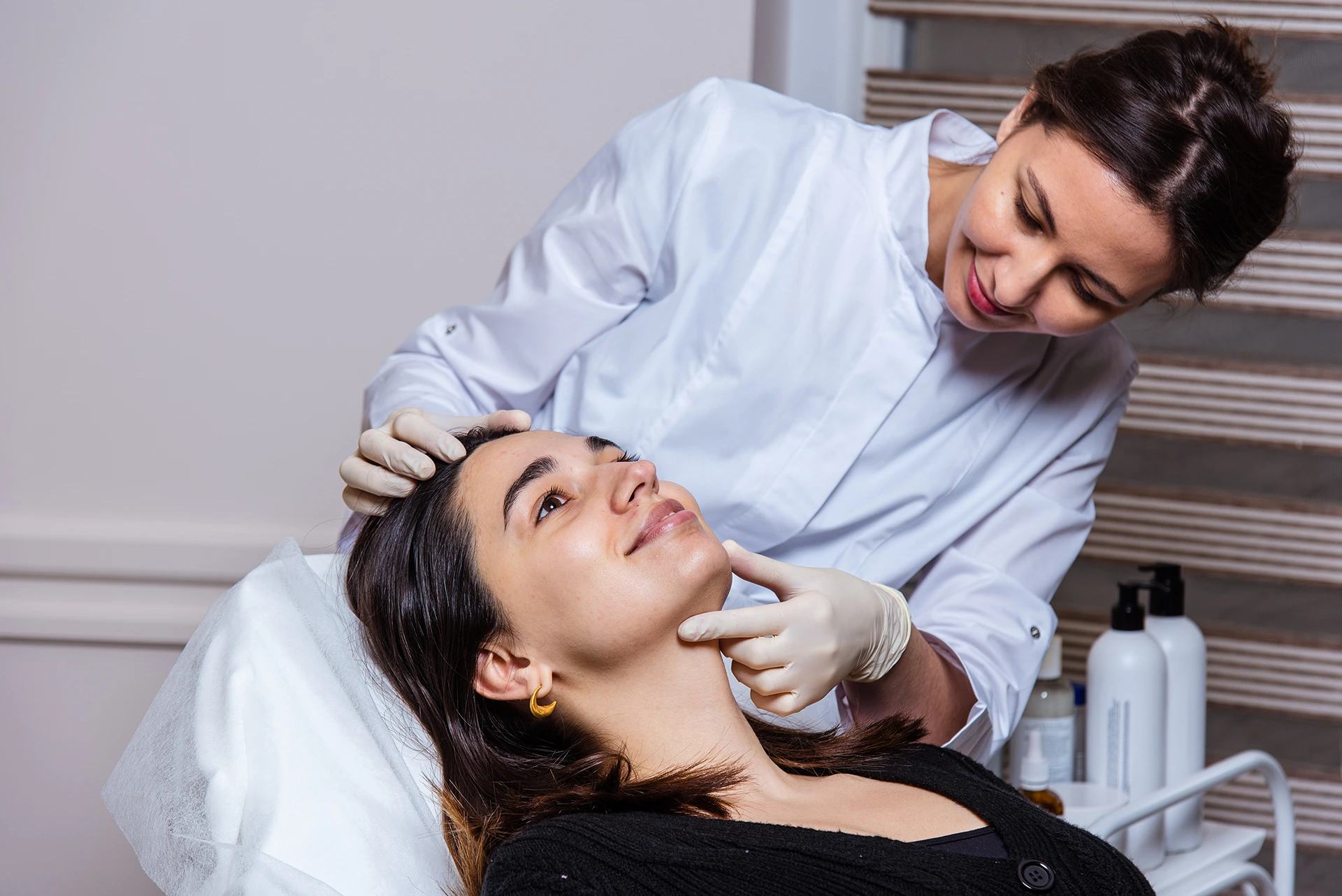Uncover expert advice, preventative tips, and the truth about dermaplaning’s effects on acne-prone skin.
What Is Dermaplaning?
Dermaplaning is a skin treatment that aims to refresh and revitalize the skin’s appearance. It uses a specialized scalpel to scrape off dead skin cells and vellus hair, known as peach fuzz.
This exfoliation process results in smoother and radiant skin, better skincare absorption, and improved makeup application. A trained professional typically performs the procedure in a sterile environment for safety.
Does Dermaplaning Cause Acne?

Dermaplaning doesn’t directly cause acne, but can lead to breakouts due to over-exfoliation, irritation, and bacteria spread.
For those with sensitive or acne-prone skin, it can worsen skin issues and lead to uneven results. Incorrect dermaplaning can cause cuts and nicks, contributing to acne.
Why Do Some People Break Out After Dermaplaning?
Dermaplaning is a cosmetic procedure that involves scraping the skin’s surface with a blade to remove dead skin cells and fine vellus hair.
While it can leave the skin feeling smoother and enhance the complexion, it’s not without potential side effects, including the risk of acne breakouts. There are several reasons for breakouts after dermaplaning:
- Increased Exposure to Bacteria: The removal of the skin’s top layer can leave the face vulnerable to bacteria, leading to acne flare-ups.
- Irritation and Over-Exfoliation: Dermaplaning exfoliates the skin, and over-exfoliation can irritate the skin, causing redness, dryness, or flakiness, possibly leading to breakouts.
- Spread of Bacteria from Tools or Hands: If the dermaplaning blade isn’t sterile or hands aren’t clean, it can introduce bacteria to the skin, increasing acne risk.
- Pre-existing Skin Conditions: Those with sensitive or acne-prone skin are more likely to exacerbate their issues after dermaplaning.
- Minor Cuts or Abrasions: The procedure can cause infections and acne.
- Product Absorption: Post-dermaplaning, the skin may absorb products more easily, and if they’re comedogenic, they can clog pores and cause breakouts.
What Can Cause a Bad Reaction To Dermaplaning?
A bad reaction to dermaplaning can be caused by over-exfoliation and irritation, stripping away the protective layer of the skin.
This makes it vulnerable to inflammation and acne. The risk of spreading bacteria is significant, especially if done at home without professional supervision, leading to acne breakouts. Cutting vellus hairs super close to the skin can make it harder for oil to escape, potentially leading to inflammation and acne.
Individuals with skin conditions such as rosacea, psoriasis, eczema, or a history of cold sores may experience exacerbated symptoms. Using comedogenic oils or silicones in skincare products can clog pores, leading to breakouts.
Does the Frequency of Dermaplaning Affect Acne?
Frequent dermaplaning can impact acne. Too much exfoliation can irritate and disrupt the skin barrier, increasing sensitivity, inflammation, and breakouts.
Allowing the skin to recover between sessions and monitoring its response is crucial. Overdoing dermaplaning can strip away the skin’s protective layer, leaving it vulnerable to issues, including acne.
Tailoring the frequency of dermaplaning to individual skin types and concerns is important, and those with acne-prone skin may need to space out their sessions more.
Can Dermaplaning Cause Cystic Acne?
Dermaplaning is a cosmetic procedure that uses a sterile surgical scalpel to remove dead skin cells and fine vellus hair (peach fuzz) from the face.
It can leave the skin smoother and aid makeup application, but there are concerns about its effects on acne-prone skin, especially the potential to cause cystic acne.
How Does Dermaplaning Affect Acne Scars?

Dermaplaning’s impact on acne scars is debated. The procedure can offer exfoliation benefits and reduce the appearance of superficial acne scars by removing discolored and uneven skin, but may not be effective for deeper scarring.
The process does not differentiate between dead and healthy skin cells, which could hinder cell turnover and skin health, affecting the appearance of acne scars.
Alternatives and Precautions
For acne-prone skin, it’s best to avoid dermaplaning during breakouts. If considered, do it with minimal breakouts, low inflammation, proper skin sanitization, and a fresh sterile blade. Avoid irritating activities like retinol afterward.
Professional vs. At-Home Dermaplaning
Professional dermaplaning is generally recommended over at-home attempts, especially for those with acne-prone skin.
At-home dermaplaning carries risks such as improper technique leading to irritation and breakouts. It’s important to thoroughly research and ensure the clinic or practitioner is well-trained and has good reviews.
How Can One Prevent Breakouts After Dermaplaning? (list tips in bullet points)
To minimize breakouts after dermaplaning, consider these tips:
- Ensure Sterility: Use a fresh, sterile blade and clean hands to minimize bacterial transfer.
- Professional Treatment: Opt for a professional dermaplaning over at-home attempts for proper technique and hygiene.
- Aftercare: Apply SPF to protect the skin and avoid makeup for at least 24 hours after treatment.
- Avoid Irritants: Stay away from retinoids and physical scrubs for several days before and after the procedure.
- Gentle Products: Use gentle, non-comedogenic moisturizers and avoid heavy, oily products.
- Limit Exfoliation: Avoid exfoliating for at least 24 hours after the procedure.
- Avoid Heat and Sweat: Stay away from saunas, steam rooms, and excessive exercise sweat post-dermaplaning.
- Gentle Cleansing: Wash face with a gentle cleanser using clean hands and pat dry instead of rubbing.
- Non-exfoliating Preparations: Consider using a non-exfoliating sheet mask before the procedure.
Is Dermaplaning Recommended for Acne-Prone Skin?
Dermaplaning involves using a scalpel to scrape off the top layer of dead skin cells and vellus hair. While it can leave the skin smooth and rejuvenated, it is not universally recommended, especially for those with acne-prone skin.
The procedure can aggravate active acne, spread bacteria, and trigger breakouts, which is concerning for individuals with active breakouts, sensitive skin, or recent strong acne medication use.
Dermatologists recommend dermaplaning for acne scarring or non-active breakouts, as it helps acne products work better by reducing bacteria and unclogging pores. For those with active acne, the risks may outweigh the benefits.
How Can One Treat a Breakout After Dermaplaning?

If a breakout occurs after dermaplaning, there are steps to manage and treat it:
- Avoid active acne during treatment to reduce the chances of a breakout.
- Consult a skincare specialist for personalized advice.
- Use non-comedogenic and hydrating products like Squalane oil to nourish the skin without clogging pores.
- Make sure the skin is clean and dry before dermaplaning to avoid spreading bacteria.
- Moisturize the skin after treatment to restore the skin barrier.
- Avoid irritating activities like retinol right after the procedure.
- Seek professional advice and treatment from dermatologists for breakouts.
- Use non-comedogenic, light moisturizers and SPF to protect the skin.
- If irritated, use mild hydrocortisone cream.
- Be patient and avoid over-exfoliating with frequent treatments.
It’s recommended to avoid sun exposure, sweating, and applying makeup after the procedure. If a scar occurs, a doctor may need to treat it with a steroid injection.
Is It Normal to Experience a Breakout After Dermaplaning at Home?
Breakouts after dermaplaning are common, especially when done at home, due to irritation from the blade, bacteria spread, or an adverse reaction to the treatment. Removing the top layer of skin can bring out developing acne sooner.
What Is the Relation Between Dermaplaning and Skin Purging?
Dermaplaning doesn’t cause skin purging, which is a reaction to active ingredients increasing cell turnover and temporary breakouts. Since dermaplaning doesn’t affect cell turnover, any breakouts after the procedure are not considered purging but may be due to irritation, bacteria, or other factors.
What Should One Consider Before Deciding To Undergo Dermaplaning?

Before dermaplaning, consider:
- Skin Type and Conditions: Individuals with sensitive skin, active or cystic acne, rosacea, psoriasis, eczema, or a history of cold sores should avoid dermaplaning as it can make these conditions worse.
- Risk of Infection: The procedure poses a risk of spreading bacteria and causing breakouts if not performed under hygienically.
- Professional vs. At-Home Treatment: Professional dermaplaning is recommended over at-home treatments to minimize risks of cuts, scarring, and infection.
- Aftercare: Proper aftercare is essential to prevent breakouts and complications. This includes avoiding exfoliants, harsh cleansers, makeup, and heavy moisturizers for a period after the procedure.
- Sun Protection: Freshly exfoliated skin is more susceptible to sun damage, so applying SPF and avoiding excessive sun exposure is critical.
While dermaplaning can be beneficial for some, it’s not suitable for everyone, especially those with acne-prone skin. Consult a skincare professional to determine if it’s right for your skin type and to ensure safe and hygienic procedure.







